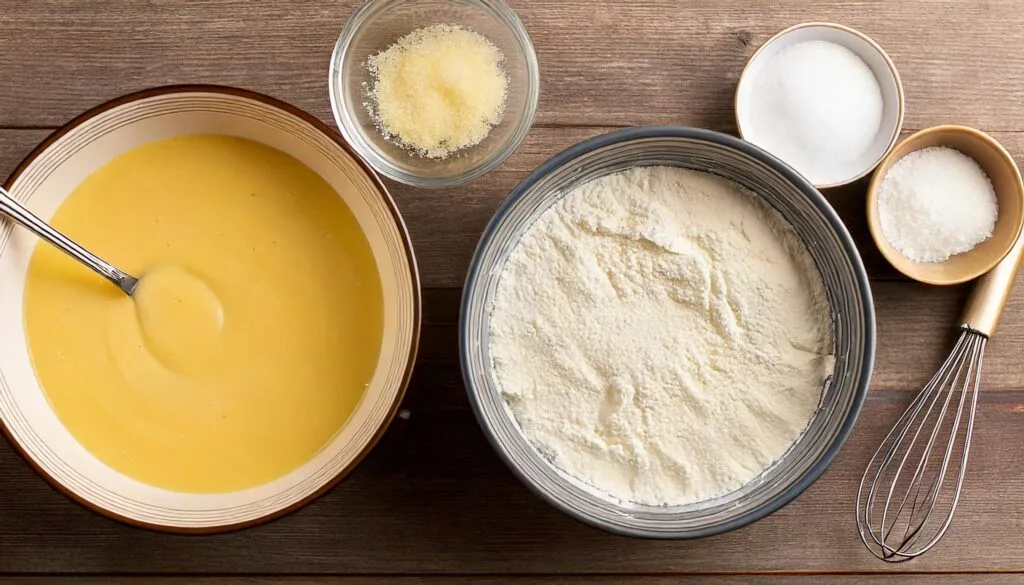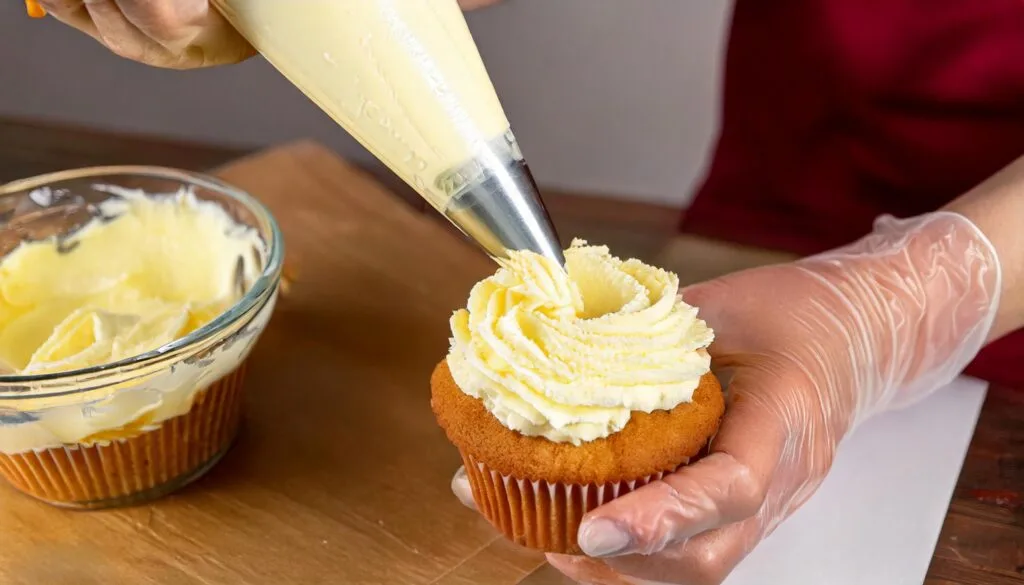How to Make Cream Cheese Filling Thicker? Getting that perfectly thick and luscious cream cheese filling can be a real game-changer in baking, but let’s face it-it’s easier said than done. One minute, you’re mixing up creamy goodness; the next, it’s a soupy mess. Sound familiar? Don’t sweat it! In this article, I’ll walk you through why cream cheese fillings sometimes turn runny, and how you can fix or avoid it altogether. From common mistakes to tried-and-true techniques, you’ll learn to whip up the perfect consistency for all your desserts. Let’s dive right in!
Introduction and Basics
Why Thickening Cream Cheese Filling Matters
Whether you’re frosting a cake, layering a cheesecake, or making stuffed pastries, the texture of your cream cheese filling can make or break your dish. A runny filling won’t just look unappetizing; it can actually ruin your entire recipe by making it soggy or unstable.
That’s why mastering the art of thickening is crucial. It’s not just about tossing in more ingredients; it’s about understanding what went wrong and how to fix it without compromising taste or quality.
Common Uses for Thick Cream Cheese Filling
From classic cheesecakes to fluffy cinnamon rolls, thick cream cheese fillings are versatile and essential. Here are a few popular uses:
- Cakes and Cupcakes: Frostings and layers.
- Pastries and Danishes: Stuffed centers.
- Dessert Bars: Think lemon or pumpkin bars with creamy toppings.
- Cookies: For sandwich fillings or decorative piping.
The best part? A perfectly thick cream cheese filling can elevate your desserts to bakery-level perfection.
Key Ingredients for Cream Cheese Filling
Before we dig into fixing runny fillings, let’s quickly review the main players in this delicious game:
- Cream Cheese: Full-fat works best for structure.
- Powdered Sugar: Adds sweetness and slight thickening.
- Butter: Stabilizes and adds richness.
- Liquid Additives: Vanilla extract or lemon juice, which can sometimes be the culprit in runny mixtures!
If you’ve got these staples in your kitchen, you’re already halfway to mastering this technique.
Common Reasons Cream Cheese Fillings Are Too Thin
Why Does Cream Cheese Filling Get Runny?
We’ve all been there you’re mixing up a cream cheese filling, only to find it’s far too soft and runny to work with. But why does this happen? Let’s unravel the most common culprits behind this frustrating scenario.
- Over-whipping the Mixture:
Whipping cream cheese filling too much introduces excessive air, which can cause the texture to break down and become soft or soupy. It’s a fine balance you want it smooth but not over-mixed. - Too Much Liquid:
Adding too much vanilla extract, lemon juice, or even milk can easily thin out the filling. While these ingredients are essential for flavor, a little goes a long way. Excessive liquid quickly dilutes the structure of the cream cheese. - Low-Fat or Soft Cream Cheese:
Low-fat cream cheese doesn’t have enough fat content to hold its shape. Similarly, using whipped or spreadable cream cheese can lead to fillings that lack firmness since they’re designed for easy spreading, not stability. - Insufficient Chilling:
Cream cheese filling often relies on being chilled to set properly. If you don’t allow enough time for it to rest and firm up, the filling can remain loose and unworkable.
Ingredient-Specific Issues
- Powdered Sugar:
Though powdered sugar can thicken fillings, adding too much can backfire. Its fine texture dissolves easily, potentially making your mixture runnier if not balanced properly. - Butter:
If your butter isn’t at the right temperature (too soft or melted), it can destabilize the filling. Room-temperature butter is ideal it should be soft but not oily. - Homemade vs. Store-Bought Cream Cheese:
Homemade cream cheese, while delicious, may contain more moisture compared to its store-bought counterpart. This extra moisture can make achieving the right thickness more challenging.
Pro Tip
To avoid these pitfalls, always measure your ingredients carefully and work with room-temperature components for better blending. If you’re new to baking or unsure, start with smaller amounts of liquid and add more gradually. Oh, and don’t forget to chill the mixture before giving up on its consistency it works wonders!
Step-by-Step Methods to Thicken Cream Cheese Filling

1. Refrigeration: The Simplest Fix
When in doubt, chill it out! Refrigeration is often the easiest way to firm up a runny cream cheese filling without adding anything extra. Here’s how to do it:
- Instructions:
• Transfer your cream cheese filling into a covered bowl.
• Refrigerate for at least 1-2 hours to allow the fats to firm up naturally.
This method works well for minor consistency issues and doesn’t alter the flavor of the filling.
2. Add More Cream Cheese
Sometimes, the solution is as simple as adding more of the star ingredient! If your mixture is too thin due to excessive liquid, adding more cream cheese can restore balance.
- How To Do It:
• Use cold, full-fat cream cheese for the best results.
• Beat it into the existing filling in small increments until the desired consistency is achieved.
3. Cornstarch or Arrowroot Powder
For a quick and easy thickening solution, cornstarch or arrowroot powder can save the day. Both are flavorless and work wonders for firming up the texture.
- Instructions:
• Mix 1-2 teaspoons of cornstarch (or arrowroot) into your filling.
• Blend thoroughly to avoid lumps.
• Let the mixture rest for 5 minutes to allow the starch to activate.
4. Whipping Cream Stabilizer
Whipping cream stabilizers, such as gelatin or agar-agar, can help achieve a thicker filling that holds its shape for decorating or piping.
From jiggly cakes to fluffy marshmallows, here’s how to use gelatin
- Gelatin Method:
• Dissolve 1 teaspoon of unflavored gelatin in 2 tablespoons of warm water.
• Let it cool slightly, then mix it into your filling while beating. - Agar-Agar Method:
• Use ½ teaspoon of agar-agar powder dissolved in 2 tablespoons of warm water.
• Incorporate into the filling the same way as gelatin.
5. Use More Powdered Sugar (With Caution)
Powdered sugar not only sweetens but also slightly thickens the filling. Be careful not to overdo it, as too much can lead to overly sweet results.
- How To Use:
• Add 2 tablespoons of powdered sugar at a time.
• Beat thoroughly and taste-test before adding more.
6. Mix in Cream Cheese Alternatives
If you don’t want to add more cream cheese, consider incorporating mascarpone or ricotta cheese. Both are thicker and can enhance the texture while maintaining the creamy flavor.
- How To Add:
• Start with 2-3 tablespoons of mascarpone or ricotta.
• Blend slowly to avoid over-mixing.
Pro Tip
Always test the filling’s consistency as you go. Over-thickening can result in a mixture that’s hard to spread or pipe, so aim for a balance between firmness and smoothness. here you will find a full article for Mastering Cream Cheese Filling: Recipes, Tips, and FAQ
How to Prevent Cream Cheese Filling From Becoming Runny
1. Start With Full-Fat Cream Cheese
The simplest way to avoid a runny cream cheese filling is to use full-fat cream cheese. It has a higher fat content, which ensures a stable structure. Avoid reduced-fat or whipped varieties, as they contain more moisture and less stability.
2. Avoid Over-Mixing
One of the biggest mistakes is over-whipping your cream cheese filling. Over-mixing breaks down the proteins and introduces excess air, leaving the texture soft and unstable.
- Pro Tip:
Beat the cream cheese until just combined with other ingredients. If using a stand mixer, stick to a medium speed and monitor closely.
3. Keep Ingredients at Room Temperature
Cold ingredients like butter or cream cheese won’t blend properly, leaving lumps that make the filling harder to set. On the other hand, overly warm ingredients can become runny.
- Best Practice:
Allow cream cheese and butter to sit at room temperature for 20-30 minutes before mixing. They should be soft enough to blend but not overly melty.
4. Add Liquids Sparingly
Liquid flavorings like vanilla extract, lemon juice, or heavy cream should be added with a light hand. Too much liquid can dilute the consistency of the filling.
- Pro Tip:
Start with small amounts, mixing as you go. You can always add more, but it’s tough to fix a filling that’s already too thin.
5. Use Stabilizing Ingredients
Including stabilizers like powdered sugar, cornstarch, or gelatin in your recipe helps ensure a thicker, more reliable filling from the start. These ingredients work by binding moisture and maintaining structure.
6. Allow Enough Chilling Time
Even a perfect cream cheese filling needs time to set properly. Skipping this step can leave your mixture too soft, no matter how well you’ve prepared it.
- Chilling Tips:
Chill your cream cheese filling for at least 2 hours before spreading or piping. If time allows, overnight chilling yields even better results.
7. Be Careful With Substitutions
While alternatives like mascarpone or ricotta can enhance flavor, they may also alter the texture if not used correctly. Stick to the recipe if you’re aiming for a thick, stable filling.
Pro Tip
Prevention is all about precision! Measuring your ingredients accurately and following the recipe to the letter can save you from last-minute fixes.
Creative Ways to Use Thicker Cream Cheese Filling in Desserts

Thick cream cheese filling is not just a fix; it’s a game-changer when it comes to making desserts more indulgent. Here are some exciting ways to incorporate it into your sweet treats:
1. Layer It in Cakes and Cupcakes
Thicker cream cheese filling works perfectly between layers of moist cakes or as a surprise center in cupcakes.
- Ideas:
• Use it as a filling for classic red velvet cake or carrot cake.
• Pipe it into cupcakes for a creamy, decadent middle.
This trick elevates any baked good with a creamy contrast to spongy textures.
2. Use It as a Dip
Transform your cream cheese filling into a luxurious dip for fruits, cookies, or pretzels. A thicker consistency ensures it stays on the dippers without sliding off.
- Serving Suggestions:
• Pair with fresh strawberries, apple slices, or graham crackers.
• Add a sprinkle of cinnamon or crushed nuts for extra flair.
3. Pipe It Into Pastries
Thick cream cheese filling is ideal for stuffing pastries like croissants, danishes, or eclairs. The firm texture holds its shape during baking and complements flaky pastry layers.
- Pro Tip:
Use a piping bag with a large tip for easy filling. Chill the filling beforehand for smoother handling.
4. Create Cheesecake-Inspired Desserts
Why stop at traditional cheesecake? Thicker cream cheese filling can be used to craft no-bake mini cheesecakes, cheesecake bars, or layered parfaits.
- How To Use It:
• Layer it between crushed graham crackers or cookie crumbs.
• Top with fresh fruit, chocolate ganache, or whipped cream for a decadent touch.
5. Decorate Cookies and Brownies
A firm cream cheese filling can double as a frosting alternative for cookies or brownies. Pipe it on for a polished look or spread it with a spatula for a rustic, homemade feel.
- Flavor Variations:
Add cocoa powder, lemon zest, or vanilla bean paste to customize the taste.
6. Fill Crepes or Pancakes
Use thick cream cheese filling as a stuffing for breakfast or dessert crepes and pancakes. The creamy texture pairs beautifully with warm, soft batter.
- Serving Tip:
Drizzle with maple syrup or fruit compote to take it to the next level.
Pro Tip
When using thick cream cheese filling in desserts, always consider how its flavor balances with other components. A little tanginess goes a long way in cutting through sweetness and creating a well-rounded treat.
FAQs About Making Cream Cheese Filling Thicker
To wrap up the core ideas, let’s address some frequently asked questions about thickening cream cheese filling. These are common queries based on the People Also Ask section, so they’ll clear up lingering doubts.
1. Why Is My Cream Cheese Filling Runny?
There are several reasons why your cream cheese filling may turn out runny:
- Using low-fat or whipped cream cheese.
- Adding too much liquid, like cream or flavoring extracts.
- Over-mixing, which breaks down the structure.
To fix it, try incorporating stabilizers like powdered sugar, cornstarch, or even gelatin.
2. Can You Thicken Cream Cheese Filling Without Powdered Sugar?
Yes! If you want to avoid powdered sugar, here are some alternatives:
- Cornstarch or arrowroot powder: Mix a small amount to thicken the filling.
- Gelatin: Dissolve in water and fold into the mixture for a firmer texture.
- Butter: Whip in softened butter for added richness and firmness.
These options work well without altering the sweetness.
3. Can You Freeze Cream Cheese Filling to Make It Thicker?
Freezing cream cheese filling may help temporarily but isn’t ideal for long-term texture improvement. While the filling might firm up initially, freezing can change the consistency, causing it to separate or become grainy when thawed.
Instead, focus on adjusting the recipe with stabilizing ingredients.
4. How Long Should Cream Cheese Filling Be Chilled?
For best results, chill your cream cheese filling for at least 2-4 hours. This allows the fats and stabilizers to set fully. If time permits, overnight chilling yields the thickest, most stable consistency.
5. What’s the Best Way to Thicken Cream Cheese Frosting for Piping?
To make cream cheese filling suitable for piping, you’ll need a thicker consistency:
- Use full-fat cream cheese and avoid adding excess liquid.
- Beat in powdered sugar gradually until the desired firmness is achieved.
- Chill the frosting for at least 30 minutes before piping to firm it up further.
Pro Tip
FAQs often help troubleshoot real-time challenges. Bookmark these tips for quick reference, and don’t be afraid to experiment to find what works best for your recipe.
Expert Tips for Perfecting Cream Cheese Filling
As we wrap up this comprehensive guide, let’s dive into some advanced strategies and tips that the pros use to make cream cheese filling consistently thicker, smoother, and more delicious.
1. Use the Right Tools and Techniques
- Whip with care: Over-mixing is a common mistake. Use a stand mixer on low to medium speed to maintain structure while achieving a creamy texture.
- Avoid watery ingredients: Fresh fruits or wet additives can dilute the filling. Use dehydrated or freeze-dried options for flavor without excess moisture.
- Cool everything down: Work with chilled cream cheese and other ingredients to prevent softening during mixing.
2. Experiment with Additives
Certain additives can elevate the consistency of your filling:
- Mascarpone cheese: Blend a small amount with cream cheese for a silkier, denser texture.
- Cream of tartar: A pinch helps stabilize the mixture.
- Instant pudding mix: Choose a flavor that complements your dessert to add firmness and depth.
3. Master Ratios and Consistency
Understanding ingredient proportions is key to getting the desired thickness:
- Powdered sugar: Start with small increments to avoid over-sweetening.
- Butter to cream cheese: A 1:2 ratio is ideal for firmness without overpowering the tanginess.
- Flour or starch: Use sparingly, no more than 1-2 tablespoons, to avoid a chalky texture.
4. Practice and Adjust for Environment
Kitchen conditions like humidity or room temperature can impact your filling:
- In warm climates, use gelatin or butter for added stability.
- On cooler days, you can rely more on powdered sugar or cream cheese alone.
Final Thought
By following these tips, you’ll not only thicken your cream cheese filling but also unlock its full potential for flavor and versatility. Whether you’re crafting cakes, cookies, or pastries, mastering this essential component will elevate your baking game to professional levels.
Thanks for exploring this ultimate guide on how to make cream cheese filling thicker! Now, it’s time to put these insights into practice get creative, experiment, and delight your taste buds.
You’ve got the knowledge, now it’s time to whip up your dream desserts! Have fun baking! 🎂
